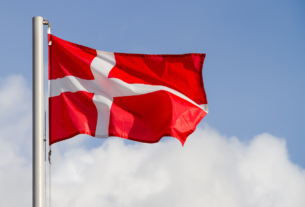Former President Donald Trump’s executive orders have posed significant challenges to human rights. His administration used executive power to enforce policies that critics argue undermine civil liberties and social protections. These orders have had widespread implications on immigration, healthcare, and racial equality.
One key area of concern was Trump’s stance on immigration. Through executive orders, Trump sought to limit asylum claims, mainly from refugees and migrants from Central America. The “Muslim Ban” is one of the most prominent examples, restricting entry from several predominantly Muslim countries. This policy led to increased discrimination and family separations at the border.
Trump’s executive orders also targeted protections for vulnerable groups. The administration sought to roll back regulations that ensured LGBTQ+ rights, including protections in employment and healthcare. In particular, an order that allowed religious exemptions for businesses created a legal pathway for discrimination, especially against LGBTQ+ individuals.
Another area affected was environmental protection. Trump’s orders aimed to reduce the scope of federal regulations on climate change, undermining efforts to address environmental justice issues. For instance, he withdrew the U.S. from the Paris Agreement, a decision that critics argue weakened global cooperation on climate action. This action also posed risks to the health and safety of vulnerable communities, especially those in low-income areas, who often face the worst effects of environmental degradation.
Trump’s executive orders also undermined access to healthcare for many Americans. The administration sought to weaken the Affordable Care Act (ACA) by limiting access to healthcare coverage. The decision to remove the individual mandate penalty and promote short-term health plans weakened protections for those with pre-existing conditions, leaving many without affordable healthcare options.
Furthermore, Trump’s policies on racial equality drew widespread criticism. His response to protests and calls for justice during the Black Lives Matter movement reflected a disregard for civil rights. Executive orders to enhance law enforcement powers and limit local government autonomy created tensions in communities already facing systemic discrimination.
Another area of concern was the administration’s approach to freedom of the press. Trump issued executive orders to limit media accountability, including measures targeting social media platforms. These orders raised questions about press freedoms and whether such actions could lead to the suppression of free speech.
Trump’s executive orders also had implications for workers’ rights. The administration sought to reduce worker protections, including efforts to scale back overtime pay and limit collective bargaining rights. These actions were seen as part of a broader trend to favor corporate interests over the well-being of workers.
Beyond domestic policies, Trump’s international human rights record raised questions about his administration’s commitment to global human rights standards. His decisions to withdraw from international human rights agreements and support authoritarian regimes sent a signal that the U.S. was less concerned with upholding global human rights.
Trump’s use of executive orders highlighted the power of the presidency in shaping policy and the risks of using executive power to bypass democratic processes. His orders prompted legal challenges, and courts blocked many. Despite this, the long-term impacts on human rights in the U.S. and globally have significantly contributed to divisions in American society.
The consequences of these executive orders remain a point of contention in political discourse. While some view Trump’s actions as necessary for national security and economic growth, others argue they damaged the fabric of American democracy and human rights. You may find that these policies have lasting effects on public trust and social cohesion.




